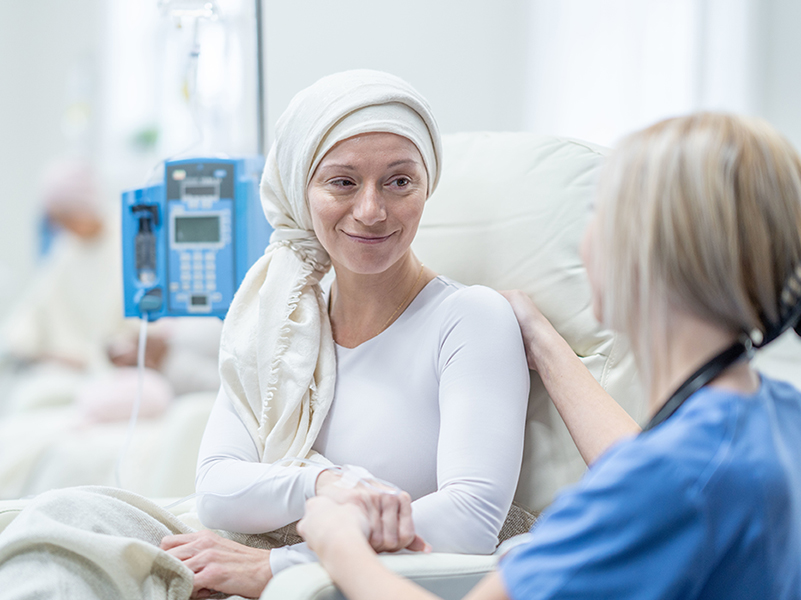The abundance of clinical trials evaluating survival and treatment outcomes in women with breast cancer has resulted in a paradigm shift to more refined surgical treatment parameters and decreased the number of additional surgeries, according to researchers with Memorial Sloan-Kettering Cancer Center in New York, NY, but the ability of surgery to cure breast cancer remains unchanged. The researchers presented the results of their analyses on Wednesday, December 7, during the San Antonio Breast Cancer Symposium.
What has changed, however, is the size of the cancers seen during the screening era; technology advancements have allowed cancers to be noticeable when they are smaller and have fewer nodal metastases, which, in turn, can mean they are more amenable to surgical care.
For example, only 25% of patients enrolled in the landmark National Surgical Adjuvant Breast and Bowel Project (NSABP) B-06 trial had clinical T1N0 (cT1N0) disease compared to 80% of those enrolled in NSABP B-32, which began 15 years later.
B-06 was instrumental in determining that the extent of local therapy was not paramount to the patient’s survival, and compared lumpectomy and axillary lymph node dissection (ALND) with or without breast radiation with modified radical mastectomy in patients with tumors 4 cm or less. After 20 years in the B-06 study, there continues to be no substantial differences between the groups. The B-32 study is comparing outcomes in patients with clinically negative axillary nodes who undergo either sentinel node biopsy (SNB) alone or SNB followed by ALND. With more than 10 years of data, researchers have found no significant differences between the two groups, meaning SNB alone is an effective treatment.
At the same time, improvements in systemic therapy options and a better understanding of tumor biology have led to greater success in treating micrometastatic disease. Use of systemic therapy is now widespread for early-stage breast cancers and often for longer durations, with anti-human epidermal growth receptor 2 (HER2) therapy given for 12 months and endocrine therapy for 5–10 years.
But this continued and progressive addition of therapies has its detractors—although outcomes are greatly improved, the burden of treatment for patients is greatly increased. Today, however, the beneficial effects of systemic therapy on local control and the lower disease burden can potentially decrease the morbidity of surgery without compromising outcomes.
A 10-year study comparing the survival and locoregional recurrence rates after complete ALND versus SNB alone in women with a positive sentinel node to avoid the complications associated with ALND (the American College of Surgeons Oncology Group Z0011 trial) found no differences in locoregional recurrence or survival among patients with metastases in 1–2 sentinel nodes after SNB alone or ALND when treated with breast-conserving surgery (BCS) and whole breast irradiation (RT).
In September 2010, Memorial Sloan Kettering Cancer Center started using the eligibility criteria for the Z0011 trial in its own patients who had cT1-2 N0 cancers undergoing breast conservation, reserving ALND for those with more than two nodal metastases or gross extracapsular extension.
Of 723 consecutive, unselected patients, 84% avoided undergoing ALND. After 12–68 months (mean follow-up was 33 months), no isolated axillary recurrences occurred. The five-year Kaplan Meier rate of any nodal recurrence was 98%.
Patients were considered high risk if they had
- Triple negative tumors
- HER2+ tumors
- Age older than 50 years
- Any combination of the above.
In these patients, ALND was required in 15.5% versus 15.9% of postmenopausal, estrogen receptor-positive patients (not a significant difference).
“These same principles led us to address the issue of what constitutes an optimal negative margin in women with invasive breast cancer undergoing BCS and RT,” the researhcers said. “After a metaanalysis and review of other relevant literature, a Society of Surgical Oncology/American Society of Radiation Oncology-sponsored consensus committee concluded that evidence did not support routinely obtaining margins more widely clear than no ink on tumor.”
The guidelines were published in February 2014; since then, the proportion of surgeons in a population-based sample endorsing no ink on tumor as an adequate margin rose to more than 60%, compared to 11% in a similar survey conducted in 2006–2007.
The guidelines, coupled with the additional study data, have translated into a reduction in the use of additional surgery, both re-excision and mastectomy after initial lumpectomy. According to a Surveillance, Epidemiology, and End Results Program sample from 2013–2015, this resulted in a 9% absolute increase in the use of BCS during the study period.
The researchers concluded, “The use of neoadjuvant therapy offers further opportunities to decrease the morbidity of surgery and individualize local therapy in the future.”





